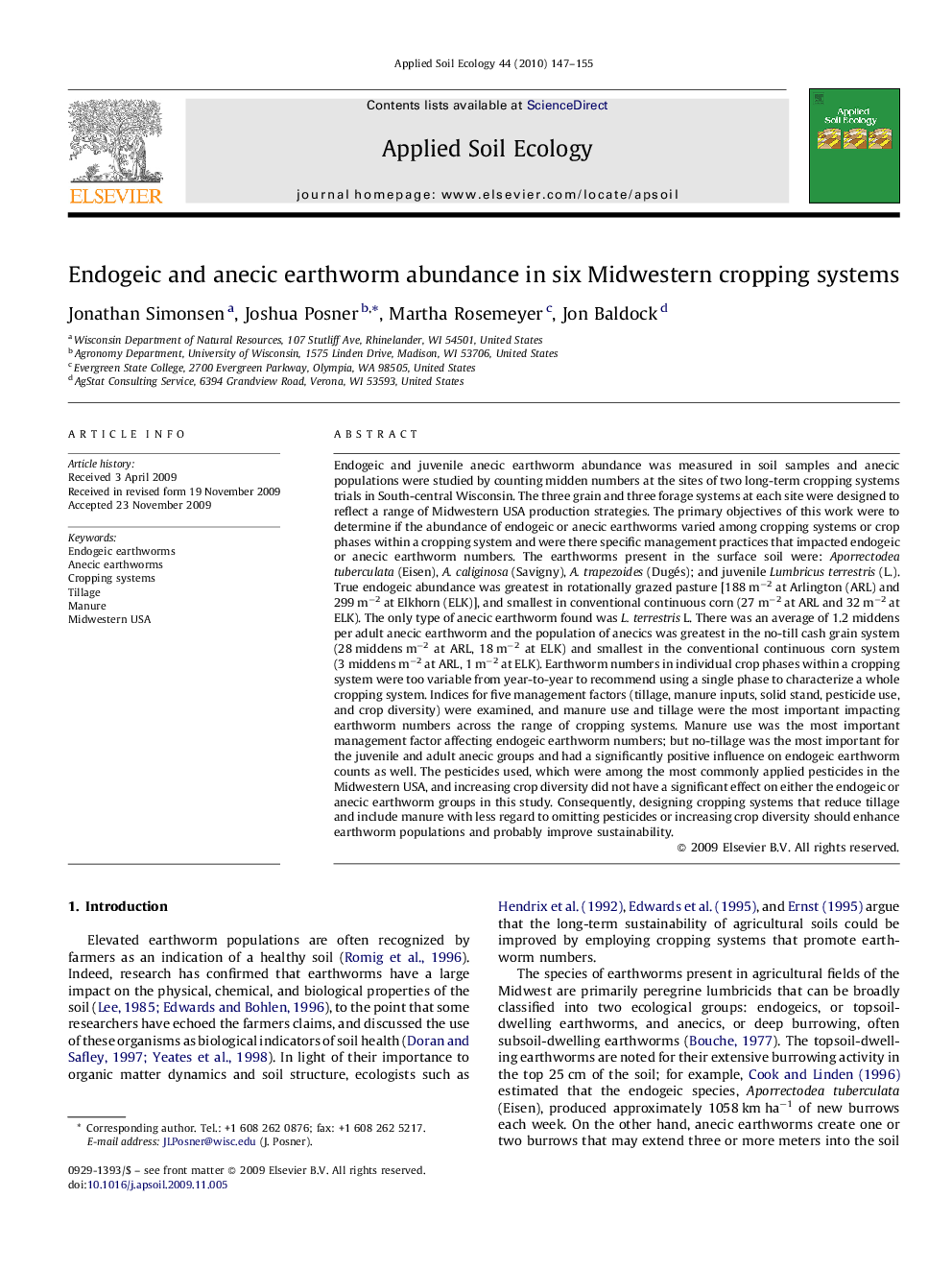| Article ID | Journal | Published Year | Pages | File Type |
|---|---|---|---|---|
| 4382915 | Applied Soil Ecology | 2010 | 9 Pages |
Endogeic and juvenile anecic earthworm abundance was measured in soil samples and anecic populations were studied by counting midden numbers at the sites of two long-term cropping systems trials in South-central Wisconsin. The three grain and three forage systems at each site were designed to reflect a range of Midwestern USA production strategies. The primary objectives of this work were to determine if the abundance of endogeic or anecic earthworms varied among cropping systems or crop phases within a cropping system and were there specific management practices that impacted endogeic or anecic earthworm numbers. The earthworms present in the surface soil were: Aporrectodea tuberculata (Eisen), A. caliginosa (Savigny), A. trapezoides (Dugés); and juvenile Lumbricus terrestris (L.). True endogeic abundance was greatest in rotationally grazed pasture [188 m−2 at Arlington (ARL) and 299 m−2 at Elkhorn (ELK)], and smallest in conventional continuous corn (27 m−2 at ARL and 32 m−2 at ELK). The only type of anecic earthworm found was L. terrestris L. There was an average of 1.2 middens per adult anecic earthworm and the population of anecics was greatest in the no-till cash grain system (28 middens m−2 at ARL, 18 m−2 at ELK) and smallest in the conventional continuous corn system (3 middens m−2 at ARL, 1 m−2 at ELK). Earthworm numbers in individual crop phases within a cropping system were too variable from year-to-year to recommend using a single phase to characterize a whole cropping system. Indices for five management factors (tillage, manure inputs, solid stand, pesticide use, and crop diversity) were examined, and manure use and tillage were the most important impacting earthworm numbers across the range of cropping systems. Manure use was the most important management factor affecting endogeic earthworm numbers; but no-tillage was the most important for the juvenile and adult anecic groups and had a significantly positive influence on endogeic earthworm counts as well. The pesticides used, which were among the most commonly applied pesticides in the Midwestern USA, and increasing crop diversity did not have a significant effect on either the endogeic or anecic earthworm groups in this study. Consequently, designing cropping systems that reduce tillage and include manure with less regard to omitting pesticides or increasing crop diversity should enhance earthworm populations and probably improve sustainability.
